Cotyledon woodii subsp. cremnophila
Cotyledon woodii Schönland & Baker f. subsp. cremnophila Van Jaarsv.
Family: Crassulaceae
Common names: Kei River cotyledon (Eng.), Keiplakkie (Afr.)
Introduction
The Kei River cotyledon is only known from cliffs along the lower Kei River in the Eastern Cape. It is a small, compact, rock-hugging shrublet with attractive pale, olive to grey-green leaves with reddish margins, and large, solitary, shiny orange-red, drooping flowers. It is easily grown and makes a rewarding pot plant.
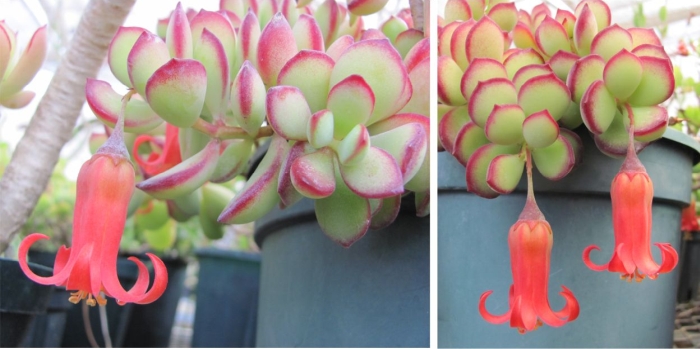
Fig. 1. Cotyledon woodii subsp.cremnophila in flower, growing in a container in the nursery at Kirstenbosch National Botanical Garden, collected from cliffs along the Kei River.
Description
Description
Cotyledon woodii subsp. cremnophila is a small, much-branched, rock-hugging succulent shrublet to 150 mm high and 200 mm wide, forming usually a woody shrublet tight against the rock face. The olive to grey-green leaves are conspicuously reddish-purple along their margin, ascending spreading, often conspicuously symmetrically arranged, with short internodes (8 mm), becoming gradually smaller upwards (pyramidal). The leaves are very succulent when fully turgid, obovoid, 30-45 x 17-27 mm. The solitary flower is orange-red, 35 x 10 mm, the tube cylindrical, 25 mm long, fused at the base for 22 mm, slightly bulging in the middle, peduncle 20 mm. The calyx lobes 4 x 4 mm, triangular, the corolla lobes 28 x 6 mm, linear-lanceolate, slightly longer than the flower tube. The nectary glands (squamae) ascending spreading, yellowish-green, 1 mm high and 3 mm in wide, notched at the tip (emarginate), semi-translucent. Flowering is in midsummer (December to January).
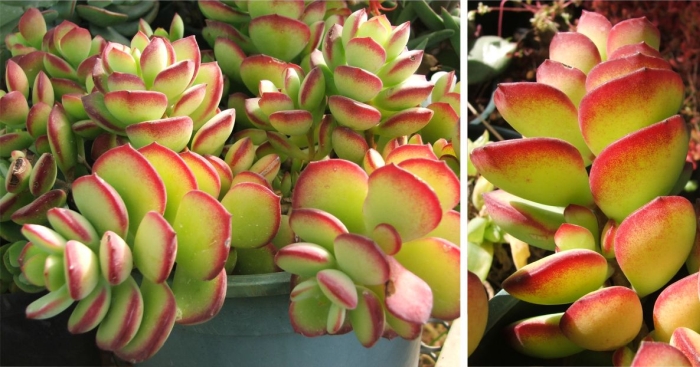
Fig. 2. Close-up of the leaves of Cotyledon woodii subsp. cremnophila. Note the leaf symmetry and the younger leaves becoming progressively shorter.
Conservation Status
Status
Cotyledon woodii subsp. cremnophila is only known from dry cliff-faces along the lower Kei River in the Eastern Cape. Due to its safe, inaccessible habitat, the plants are clearly not threatened.
Distribution and habitat
Distribution description
Confined to sheer cliffs along the lower Kei River in the Eastern Cape, plants grow in rocky pockets, ledges and crevices on most aspects. The geology consists of hard shale cliffs of the Emakwezini Formation (Beaufort Group, Karoo Supergroup) (Johnson & Van Vuuren 2006). The Kei River is a large river system draining parts of the south-western Drakensberg.
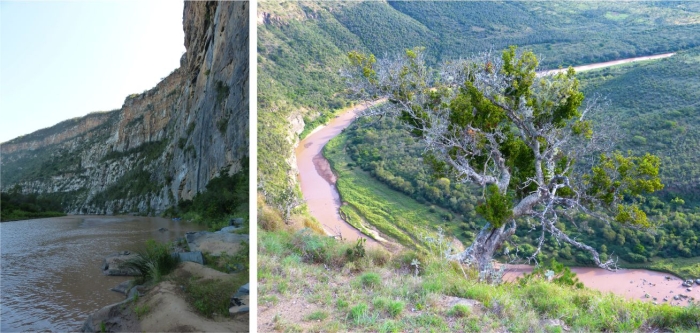
Fig. 3. The cliff face habitat of Cotyledon woodii subsp. cremnophila along the Kei River, a large river in the Eastern Cape, habitat of many succulents including Cotyledon woodii subsp. cremnophila. Note the blue rubber canoe on the river.
The vegetation in the habitat of Cotyledon woodii subsp. cremnophila consists of Eastern Valley bushveld (Sub-Escarpment Savanna Bioregion) (Svs6) (Mucina et. al. 2006), and part of the Savanna Biome. The climate is hot during summers but cooler during the winters. The average daily maximum temperature is 28°C and average daily minimum 12°C. Rainfall occurs mainly in summer in the form of thunder showers, 300–800 mm per annum. Plants grow at an altitude of about 400–800 m above sea level.
Associated cliff dwelling succulents in the habitat include Adromischus liebenbergii subsp. cremnophila, Albuca bracteata, Aloe striata, Bulbine latifolia, Coddia rudis, Coleus subspicatus, Cotyledon petiolaris, Crassula cultrata, C. orbicularis and C. perforata, Huernia pendula, Haworthia cymbiformis var. setulifera, Gasteria excelsa, Delosperma laxipetalum and D. stenandrum and Caputia scaposa.
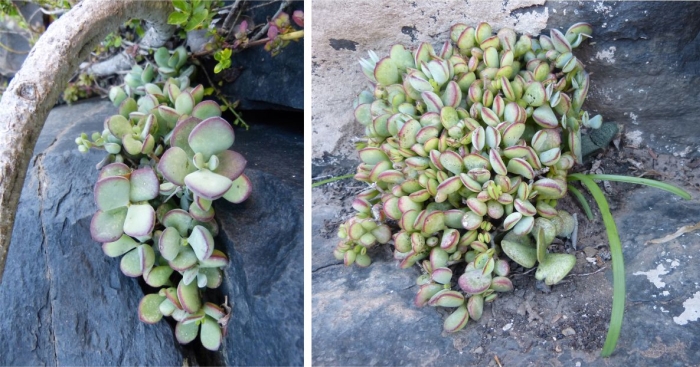
Fig. 4. Plants of Cotyledon woodii subsp. cremnophila in habitat on cliffs adjacent to the Kei River, LEFT sharing its habitat with Coleus subspicatus (succulent) and Coddia rudis (woody shrub) and RIGHT a tight cluster on a ledge with a Gasteria excelsa seedling and young plant of Albuca bracteata.
Derivation of name and historical aspects
History
Cotyledon woodii subsp. cremnophila was named by the author in the magazine Haseltonia, the Yearbook of the Cactus and Succulent Society of America (Van Jaarsveld 2015). As part of the author’s research on succulent obligatory cremnophytes, confined to southern African cliffs, many of the greater river drainage systems were investigated, including the Kei River. The species name cremnophila pertains to its sheer cliff face habitat, kremnos meaning ‘cliff’ and philos, ‘to love’. This plant was first brought to my attention by Cameron & Rhoda McMaster when they brought a specimen to Kirstenbosch which they had collected on the sheer rock faces along the Kei River in the Eastern Cape. At first glance it appeared to be Cotyledon woodii because of its inflorescence being reduced to a solitary flower, as well as its woody nature. On subsequent expeditions, the first to the Kei Bolo in March 2003, and later by rubber canoe to the Kei River in April 2012 the plant was also observed by the author and could be properly investigated and its status and distribution determined. This plant was grown at Kirstenbosch and later at Babylonstoren Farm, together with typical Cotyledon woodii subsp. woodii forms, but it soon became apparent that its size and habit remain constant, therefore warranting subspecific status. The plants keep their low-growing, rock-hugging characteristics, reaching only about to 15 cm high. The very succulent leaves on the branches, often become smaller towards the ends of the branches, somewhat pyramidal, and the margin of the leaves become dark maroon. The internodes are also shorter, only 8 mm long.
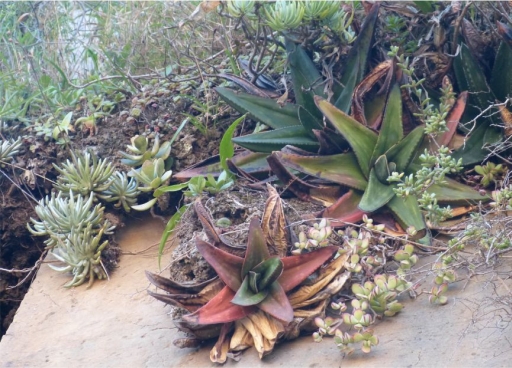
Fig. 5. Cotyledon woodii subsp. cremnophila in habitat on cliffs adjacent to the Kei River, sharing its habitat with Gasteria excelsa, Caputia scaposa and Adromischus liebenbergii subsp. orientalis.
Cotyledon woodii subsp. cremnophila belongs to a group of small-leaved cotyledons. Cotyledon woodii subsp. woodii is widespread, succulent-leaved, erect, much branched woody shrub, to just over a 1 m high, bearing flatter leaves, and commonly encountered in Albany Thicket vegetation, from Ladismith in the Western Cape to the dry river valleys of the Eastern Cape. Cotyledon woodii subsp. cremnophila is also related to Cotyledon pendens, which is only known from the Mbashe River system north-east of the Kei River. They can be confused, however the leaves are more grey and flowers of C. pendens are somewhat smaller and are usually not solitary, and the plants soon become pendent. C. woodii subsp. cremnophila remains a shrublet. It is also related to Cotyledon gloeophylla, a much branched shrub, like C. woodii subsp. woodii, from the eastern Baviaanskloof which has solitary flowers. This species, however, is easily distinguished by its sticky, green leaves.
Ecology
Ecology
Cotyledon woodii subsp. cremnophila is a slow-growing, cliff dwelling succulent plant which escapes disturbance and predation from larger herbivores. The compact, conservative, pyramidal growth and its highly succulent leaves enable the plant to grow in dry, rocky habitats with a high run-off and periods of prolonged droughts. The leaves turn reddish during periods of drought, due to the pigment anthocyanin which aids with the regulation of light intake and thus allows a more streamlined process of photosynthesis. Malic acids accumulated during the nights are broken down during the day, enabling the plant to keep its breathing pores closed and preventing moisture loss through transpiration during the hot daylight hours. This process is known as CAM (Crassulacean Acid Metabolism) a very effective way conserving water, shared with so many other succulent plants.
The solitary tubular flower is bright orange-red, with a hight visibility that attracts sunbirds which are the main pollinators. After fertilisation, the pendent flower wilts and the fruits develop, becoming erect when mature, and seed is dispersed by wind. Seed landing in suitable crevices will germinate with moist conditions. Branches which touch the substrate will root.
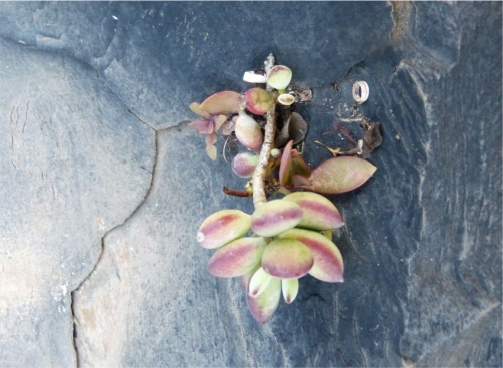
Fig. 6. A young plant of Cotyledon woodii subsp. cremnophila growing in a small crevice on a sheer cliff along the lower Kei River.
Uses
Use
Apart from growing it as an ornamental, not other local uses have been recorded.
Growing Cotyledon woodii subsp. cremnophila
Grow
The Kei River cotyledon makes a charming pot plant and has become popular around the world. Like most cotyledons, it is easily grown in dry, semi-arid, savanna and Mediterranean climate gardens. However it is small and slow growing, and when planted under normal garden conditions, where it would have to contend with competition from other faster and more aggressive species, it would soon be overgrown and suffocated. Therefore it is best to grow it in a container on a stoep or windowsill. It is suited for the dry Bushveld and Thicket gardens but as a pot plant can be grown almost anywhere. Compared to other species of Cotyledon it is of slower growth but eventually forming a branched shrublet to 15 cm high. Plant in a sunny well-drained site, preferably in pockets created by an artificial rockery. Plants will also grow in hanging baskets. Cotyledon woodii subsp. cremnophila can also be grown in some shade. Water well during summer and autumn and less so during winter and early spring. Adding an organic fertilizer to the watering, enhances their growth performance. The Kei Cotyledon has been grown with success in the Babylonstoren Succulent House and is not shy to flower during the summer, where the plants can be viewed.
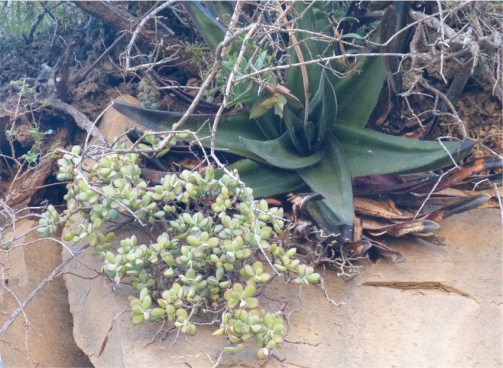
Fig. 7. Cotyledon woodii subsp. cremnophila in habitat along the Kei River sharing its habitat with Gasteria excelsa.
The neat, striking symmetrical growth, purplish-green leaf margin and large red pendent flowers makes Cotyledon woodii subsp. cremnophila a worthwhile introduction to horticulture.
Propagate from cuttings, about 3-6 cm in length. Remove lower leaves and root in sand in spring or summer. Place in a warm partially shady area. Plants are slow growing but will grow into an attractive plant with its pale leaves and shiny orange-red flowers.
References
- Clarke, H. & Charters, M. 2016. The illustrated dictionary of southern African plant names. Flora & Fauna Publications Trust, Jacana, Johannesburg.
- Eggli, U. (ed.) 2003. Illustrated handbook of succulent plants: Crassulaceae. Springer, Berlin.
- Johnson, M.R., et al. 2006. Sedimentary rocks of the Karoo Supergroup. In M.R. Johnson, C.R. Anhaeusser & R.J. Thomas (eds), The geology of South Africa: 463–501. Geological Society of South Africa, Johannesburg Council for Geoscience, Pretoria.
- Mucina, L. & Rutherford, M.C. (eds) 2006. The vegetation of South Africa, Lesotho and Swaziland. Strelitzia 19. South African National Biodiversity Institute, Pretoria.
- Tölken, H.R. 1985. Crassulaceae. In: O.A. Leistner (ed). Flora of southern Africa 14(1):1-244. Botanical Research Institute, Pretoria.
- Van Jaarsveld, E. & Koutnik, D. 2004. Cotyledon and Tylecodon. Umdaus Press, Hatfield, Pretoria.
- Van Jaarsveld, E.J. 2015. Cotyledon gloeophylla, a new species from the Kouga River, Eastern Cape. Bradleya 33: 180–184.
- Van Jaarsveld, E. J. 2015. Cotyledon woodii subsp. cremnophila, a new cliff dwelling taxon from the Kei River, Eastern Cape, Republic of South Africa. Haseltonia 21: 77-79.
- Van Jaarsveld, E.J. 1994. The distribution of Tylecodon and Cotyledon (Crassulaceaea) in south Arica and Namibia, pp. 1157–1163. In: Proceedings of the 13th Plenary Meeting of AETFAT Congress, Zomba, Malawi.
- Van Jaarsveld, E.J. 2003. New cliff-dwelling Crassulaceae from the Eastern Cape: a new Cotyledon and two new Adromischus taxa from the Mbashe and Mzimvubu Rivers, South Africa. Aloe 40: 2: 36–39.
- Van Jaarsveld, E.J. 2015. Cotyledon petiolaris, a new cliff-dwelling species from the Eastern Cape South Africa. Bradleya 33: 21–16.
- Van Wyk, A.E. & Smith, G.F. 2001. Regions of floristic endemism in South Africa. A review with emphasis on succulents. Umdaus Press, Hatfield, Pretoria
Credits
Ernst van Jaarsveld
Kirstenbosch National Botanical Garden (Retired 2015)
Babylonstoren Farm
Extraordinary senior lecturer and researcher,
Department of Biodiversity and Conservation, University of the Western Cape
April 2023
Plant Attributes:
Plant Type: Succulent
SA Distribution: Eastern Cape
Soil type: Sandy, Loam
Flowering season: Early Summer, Late Summer
PH: Acid, Neutral
Flower colour: Red, Orange
Aspect: Full Sun, Morning Sun (Semi Shade), Afternoon Sun (Semi Shade)
Gardening skill: Easy
Special Features:
Horticultural zones
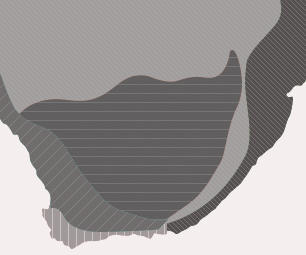







Rate this article
Article well written and informative
Rate this plant
Is this an interesting plant?
Login to add your Comment
Back to topNot registered yet? Click here to register.